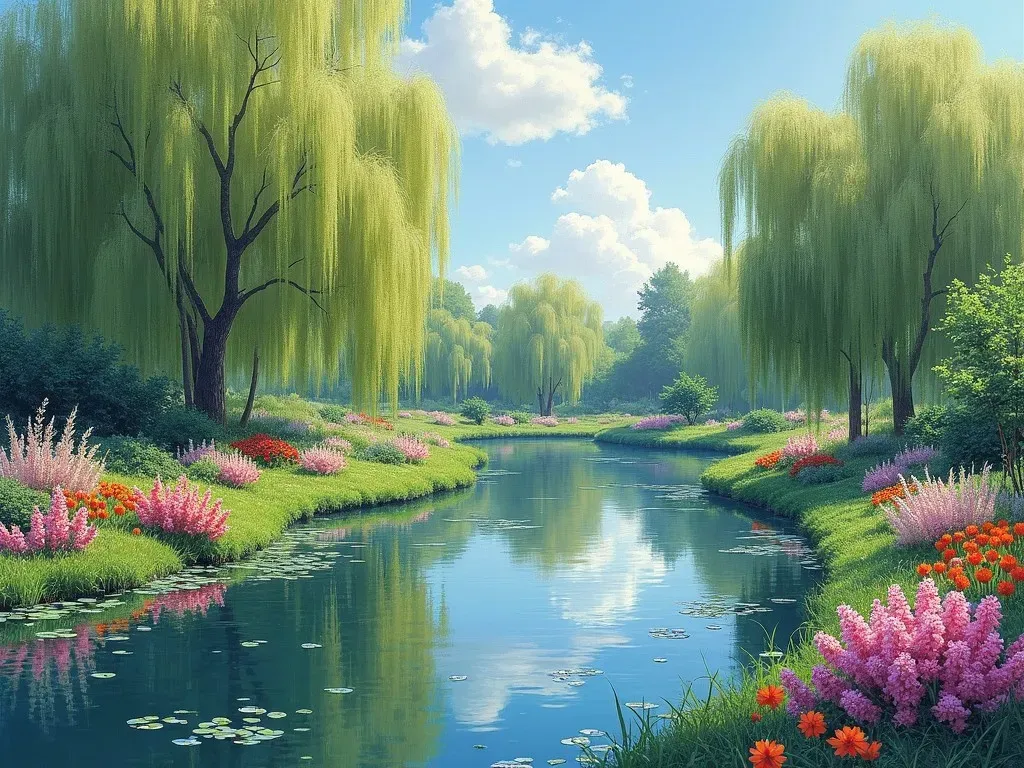Claude Monet, often referred to as the father of Impressionism, was a French painter whose work revolutionized the art world and continues to inspire generations. His innovative Techniques captured the ephemeral qualities of light and atmosphere, making him one of the most celebrated artists of the 19th century.
Monet was born on November 14, 1840, in Paris, France, and passed away on December 5, 1926, in Giverny. His extensive body of work includes iconic pieces such as “Impression, Sunrise,” which gave the Impressionist movement its name, and the famed “Water Lilies” series. Over his lifetime, Monet created nearly 2,500 paintings, drawings, and pastels, each reflecting his dedication to capturing the beauty of nature and the ever-changing qualities of light.
The Evolution of Monet’s Style
Early Influences
Monet’s formative years were spent drawing caricatures, and his first artistic education began at the Académie Suisse in Paris. Influenced by artists such as Édouard Manet and the Barbizon School, Monet embraced plein air painting (outdoor painting) allowing him to interact directly with natural light.
The Birth of Impressionism
In 1874, a group of artists including Monet held an exhibition that defied traditional art norms. One critic crudely dismissed the works as mere “impressions” of scenes, sparking the term “Impressionism.” Monet and his contemporaries focused on capturing the fleeting effects of light, color, and atmosphere rather than realistic details.
| Period | Characteristics | Notable Works |
|---|---|---|
| Early Work | Traditional techniques, still lifes | “Woman in the Garden” |
| Impressionism | Loose brushwork, emphasis on light and color | “Impression, Sunrise” |
| Later Work | Larger canvases, series paintings, and use of color theory | “Water Lilies,” “Haystacks” |
Iconic Monet Paintings
Monet’s major works are easily recognizable and have become synonymous with the Impressionist movement. Here are some of his most celebrated paintings:
1. Impression, Sunrise (1872)
This painting, which depicts the harbor of Le Havre, is credited with naming the Impressionist movement. Its vivid colors and loose brushstrokes are emblematic of Monet’s style, effectively capturing the essence of a sunrise.
2. Water Lilies Series (1896-1926)
Comprising approximately 250 paintings, the Water Lilies series represents Monet’s fascination with his garden in Giverny. These large-scale canvases focus on the reflection of light on water, emphasizing color and texture.
3. Rouen Cathedral Series (1892-1893)
In this series, Monet captured the Cathedral at different times of day and under varying weather conditions. He painted around 30 versions, showcasing his exploration of light and shadow.
4. The Japanese Bridge (1899)
This painting features the famous bridge in his Giverny garden, surrounded by flourishing water lilies. It speaks to Monet’s deep connection to nature and his garden as a source of Inspiration.
5. Haystacks Series (1890-1891)
Monet painted several representations of haystacks in different seasons and times of day, demonstrating his emphasis on the changing quality of light. His works from this series remain some of his most renowned pieces.
Reference Video
The Significance of Monet’s Work
Monet’s innovative techniques and themes marked a shift in the art world. His focus on the perception of the moment—not merely replicating reality—invited audiences to engage with his artworks in new ways. Here are several key aspects of his legacy:
A Master of Color and Light
Monet’s ability to understand and depict light has led to his enduring status as one of art history’s greatest colorists. His works boast a palette that evokes mood, seasonality, and atmosphere.
The Importance of Nature
Nature was a central theme in Monet’s oeuvre. He often painted the same scene multiple times, showcasing how light and climate change affected the appearance of landscapes.
| Theme | Examples | Significance |
|---|---|---|
| Light | “Rouen Cathedral,” “Impression, Sunrise” | Demonstrated the transient nature of light |
| Nature | “Water Lilies,” “The Japanese Bridge” | Celebrated beauty in natural elements |
| Repetition | “Haystacks” series | Explored the evolution of perception |
Influence on Modern Art
Monet’s work laid the groundwork for various subsequent art movements, including Post-Impressionism, Fauvism, and Abstract Expressionism. His ideas about color and perception continue to resonate with contemporary artists.
FAQs about Claude Monet
Who was Claude Monet?
Claude Monet was a French painter widely known as the founder of Impressionism, a style that focuses on the effects of light and color in the natural world.
What are Monet’s most famous paintings?
Some of Monet’s most famous works include “Impression, Sunrise,” “Water Lilies,” and the “Rouen Cathedral” series.
How did Monet’s technique differ from traditional painting?
Monet employed loose brushwork and painted en plein air, capturing the changing light and weather conditions rather than detailing forms realistically.
What themes are prevalent in Monet’s artwork?
Monet often focused on themes of nature, particularly the effects of light on landscapes, water, and gardens—an interest reflected in his numerous series, such as Haystacks and Water Lilies.
Where can I find more information about Claude Monet?
For more detailed information about Claude Monet, his life, and his work, you can visit Wikipedia.
In summary, Claude Monet’s artistic ingenuity and his beautiful depictions of nature have forever changed the art world. His relentless pursuit of capturing light and atmosphere continues to enchant art lovers worldwide. Whether through his captivating paintings or the legacy he left behind, Monet remains a central figure in the history of art.
